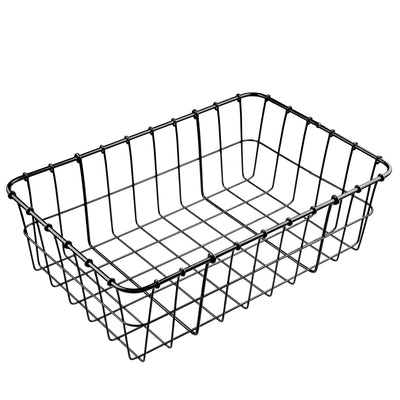Is It Just Time to Call Them Bars?

Handlebars have always been a critical component of cycling, shaping not just the look of a bike but also its performance and feel. For decades, the distinction between flat bars and drop bars has served as a convenient shorthand for categorizing bicycles. Flat bars conjure images of mountain bikes and urban rides, while drop bars evoke the streamlined posture of road racing. Yet, as cycling has diversified, so too have the options for handlebars—leading to the rise of what many have dubbed "alt-bars."
Alt-bars, short for alternative handlebars, encompass a wide range of designs: Trekking Bars (the original alt-bar), Crazy Bars, Klunker Bars, Far Bars, and more. Originally the domain of bikepacking, touring, and other niche disciplines, these handlebars offered solutions to specific challenges—more hand positions, improved comfort, or enhanced control on technical terrain. But as cycling has evolved and these bars have become more common, a question arises: are they still "alternative," or is it time to simply call them "bars?"
The Evolution of Handlebars
For much of cycling history, handlebars were neatly divided into flat and drop categories. This split reflected the two dominant cycling purposes: utility and speed. Flat bars dominated in mountain biking and urban settings, offering upright posture and stability. Drop bars, on the other hand, catered to speed and efficiency, prioritizing aerodynamics and multiple hand positions.

As cycling transformed in the late 20th and early 21st centuries (oh, that phrase makes me feel old), so did its handlebars. Designers began to experiment with forms that defied the flat/drop binary. The results—from swooping mustache bars to multi-position butterfly bars—were embraced by touring cyclists, gravel adventurers, and everyday riders seeking comfort and utility.
Alt-Bars Go Mainstream

What was once considered unconventional is now a mainstay of modern cycling. Alt-bars have moved beyond their niche origins to adorn bikes of all types, from gravel grinders to commuter rigs. Today, it’s not uncommon to see drop bars on a cargo bike or Klunker Bars on a single-speed commuter.
This change reflects a growing diversity in cycling culture. Riders are prioritizing comfort, versatility, and individuality over traditional notions of speed and efficiency. Alt-bars, with their ergonomic advantages and unique aesthetics, have proven to be the perfect match for these priorities.

Rethinking the Label
But if alt-bars are now mainstream, does the "alternative" label still make sense? At its core, the term "alt-bar" implies a deviation from the norm. Yet, with their widespread adoption, these bars arguably are the norm for many cyclists. Has maintaining the "alt" label, created distinctions where none are needed?

Breaking down handlebars into subcategories like "trekking bars" or "bullmoose bars" might serve a marketing purpose, but it risks overcomplicating things for new riders. After all, what truly matters is not the name but how a handlebar feels, performs, and aligns with a rider's needs.
Embracing a Unified View

Perhaps it’s time to reframe how we talk about handlebars. Instead of rigid categories, we might think of handlebars as existing on a spectrum—a continuum of shapes, angles, and purposes. By shifting the focus from labels to functionality, we can encourage riders to explore what works best for them without being constrained by terminology, applications and preconceptions.
This approach simplifies the conversation, reflecting the inclusive spirit of modern cycling. Whether you’re rocking a set of Granola Bars for your daily commute or Far Bars on your gravel bike, the choice should be celebrated as part of the medley that makes cycling so vibrant.
Thoughts?
So, what do you think? Are we at the point where it’s just time to call them all "bars"? Or do you think the distinctions still serve a purpose? Share your thoughts, your favorite handlebar setups, and the adventures they’ve taken you on. Let’s keep the conversation rolling—on whatever bars you prefer.






Moustache bars are great. I have them on both my bikes.
Sure, it’s “bars”, no need for the qualifier. There no standard for handlebars, it’s just like frames.
Hi, whats the Closest bar that is comparable to Magic components’ Mothbar? Thanks
As I’ve gotten older I’ve come to appreciate the new variety of shapes- flat bars don’t feel as great as they used to, especially with arthritis in my thumbs. So having options that put my hands in different places and distribute shock from the ground in different ways is really wonderful. I’d rather keep riding as long as humanly possible so I’m going to try whatever it takes to ride, from surly corner bars to vo crazy bars to whatever. Thanks for keeping folks on the road.
Aren’t alt-bars basically the original handlebars of bikes, that have continued in use in Europe and other continents where bikes are for transport rather than/as well as for sport?
The alt label isn’t a problem but thinking of them as oddball could be. I have FarBars on my road bike and the ergonomic wrist position makes them the most comfortable drops I’ve ever held. Ditto the swept back “riser” bars on my dirt bike. It seems to me that a lot of trends in bicycle design are pure marketing, no practical value, just fashion; but alt bars are a great functional alternative.
Leave a comment